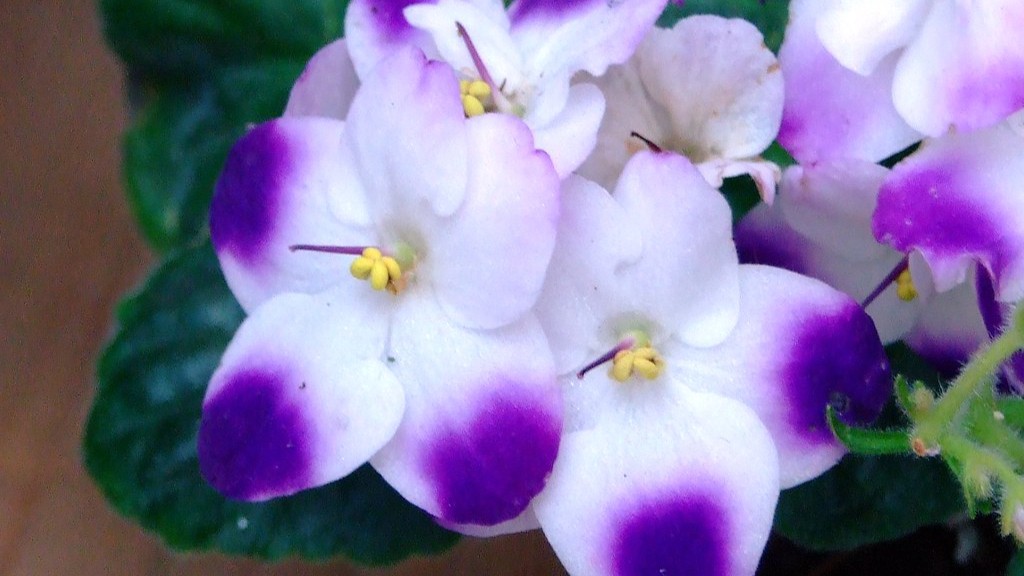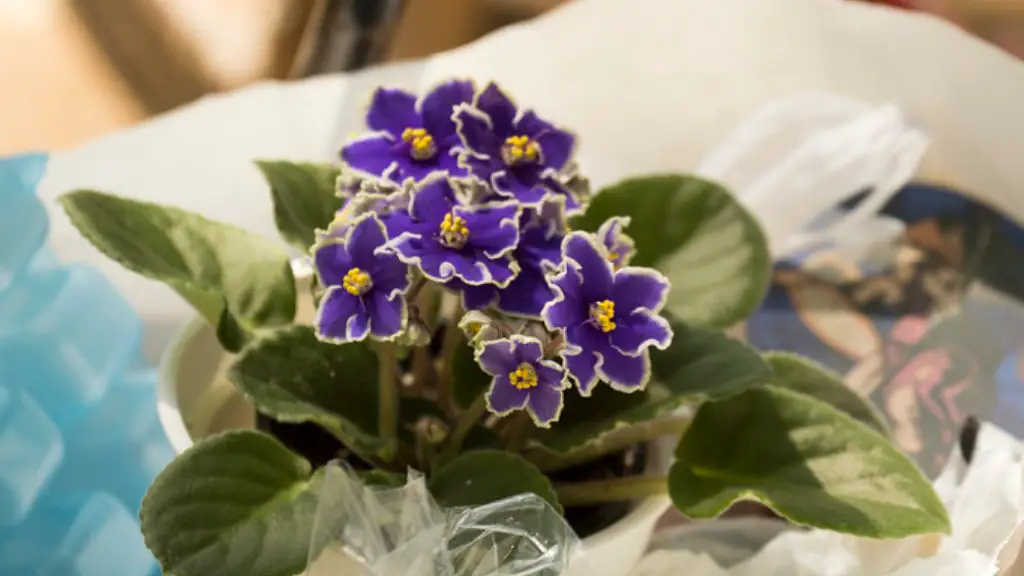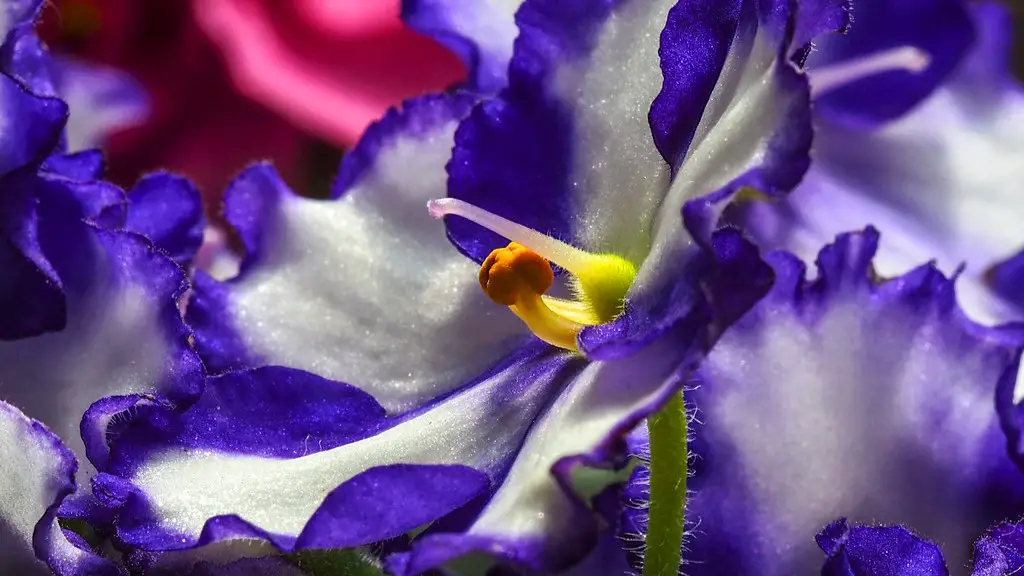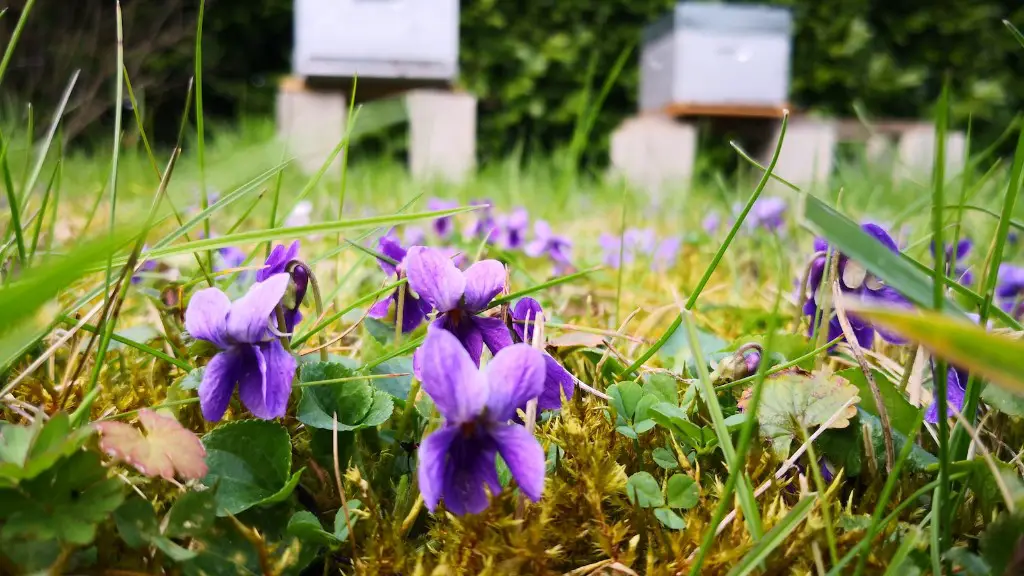African violets are a beautiful and popular houseplant that is known for its delicate flowers and fuzzy leaves. The plant is native to Africa and prefers warm, humid conditions. In its natural habitat, african violets grow in filtered sunlight or in shady areas. When grown as a houseplant, african violets can tolerate short periods of direct sunlight, but too much sun will cause the leaves to scorch.
Most african violets can tolerate a little bit of direct sunlight, but too much direct sunlight can scorch the leaves. If you have african violets that are in direct sunlight, be sure to watch them closely and move them if the leaves start to turn yellow or brown.
Can African violets get too much sun?
African violets need plenty of sunlight, but only indirect sunlight. If violets get more than this, they will begin to show signs of scorching on the leaves and flowers. In some cases, too much sunlight will turn variegated leaf varieties entirely green.
If you want your plants to have the best color and blooms, grow them in bright, indirect light. An ideal location for a plant stand is three feet away from a west- or south-facing window. Plants will still grow when situated right beside north- or east-facing windows, but leaves will be thin and spindly, and plants less likely to bloom.
How much sun does an African violet need
African violets require at least 8 hours of light per day and at least 8 hours of darkness per night to thrive. For long lasting blooms, 12 hours a day of natural sunlight is ideal. African violets need bright light during the day to produce blooms, but too much light can cause the leaves to yellow.
African violets need bright light to bloom, but cannot tolerate hot, direct sun because their leaves are easily scorched by intense light. Violets bloom best at temperatures from 65 to 75 degrees.
Do African violets like bigger pots?
African violets do best when they are slightly pot-bound, so choose a pot that’s on the smaller side. A professional tip is to choose a pot that is 3-4 inches in diameter for a standard African violet plant.
A wicking system is a great way to make sure your African violets are never over watered. Simply water the plant once a week and allow the plant to completely dry between waterings. The wicking system will slowly and evenly distribute water to the roots of the plant, ensuring that they always have the moisture they need without being waterlogged.
Should African violets be misted?
Water your African violet sparingly, and be sure not to mist the foliage as this can cause permanent leaf spotting. Use room-temperature water, and take care not to saturate the crown of the plant as this can lead to crown rot.
To ensure that your African violets are getting the right amount of sunlight, place them in an east-facing window with a sheer curtain to filter the sun’s rays. African violets need eight hours of darkness every night, so if you are keeping them in a bright room, make sure to provide them with a bright, indirect light source.
Should you touch African violet leaves
While brushing leaves of african violets may seem like a harmless way to dust the plant, it can actually have a negative impact on the quality and size of the plant. Repeated brushing can damage the leaves, making the plant less healthy and vibrant. So, for the health of your african violet, resist the urge to brush its leaves!
If your violet’s leaves are turning yellow or the edges are burning, it’s getting too much sun. If the leaves are a healthy green but there are no blooms, it’s not getting enough sun. Check your violet and adjust its exposure to sunlight accordingly.
What is the lifespan of an African violet?
African violets are beautiful flowers that can last up to 50 years, making them a great addition to any home. However, it’s important to remember to repot them every few years to ensure they stay healthy and vibrant. By doing so, you’ll be able to enjoy their beauty for many years to come!
African violets are best watered from the bottom up. This allows the water to soak into the soil through the drainage holes, and the plant can absorb the water it needs. Place the plant in a shallow tray of water for 30 minutes, then remove and allow to drain.
Can African violets tolerate heat
African violets prefer a temperature of about 70 degrees Fahrenheit. Though many violets will tolerate temperatures between 60 and 80 degrees Fahrenheit or higher, they will perform best when day and night temperatures vary no more than five degrees either way. If the temperature gets too warm, African violets will suffer.
African violets can bloom nearly year-round if you are able to provide the correct conditions. Expect your African violets to bloom 10-12 months each year. Each bloom lasts for about 2-3 weeks.
What pots are best for African violets?
If you’re looking for the best pots for African violets, you can’t go wrong with the Mkono 3 Pack Self Watering Plastic Planter, the Ceramic Pot with Saucer, or the Blue Self Watering Ceramic Planter. For something a little different, try the Aquaphoric Self Watering Planter or the Self Aerating Self Watering Pot. And if you’re looking for a classic terracotta pot, we’ve got you covered there too.
African violets need a pot that is Terra Cotta in order to breath better and prevent the soil from becoming too wet. The roots of African violets don’t go deep, they like to grow sideways, so using a deep pot is not necessary. Your pot must have drainage holes so you can water African violets from underneath.
Warp Up
No, African violets should not be in direct sunlight. They prefer bright, indirect light and will bloom best if they receive 12-14 hours of light each day.
Yes, African violets can be in direct sunlight, but they prefer filtered light or indirect sunlight. African violets need at least six hours of sunlight per day to bloom. However, too much direct sunlight can scorch the leaves of African violets.





